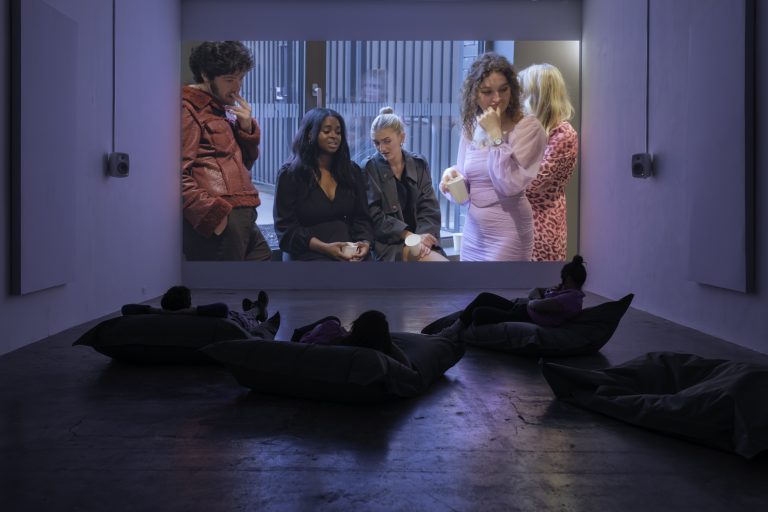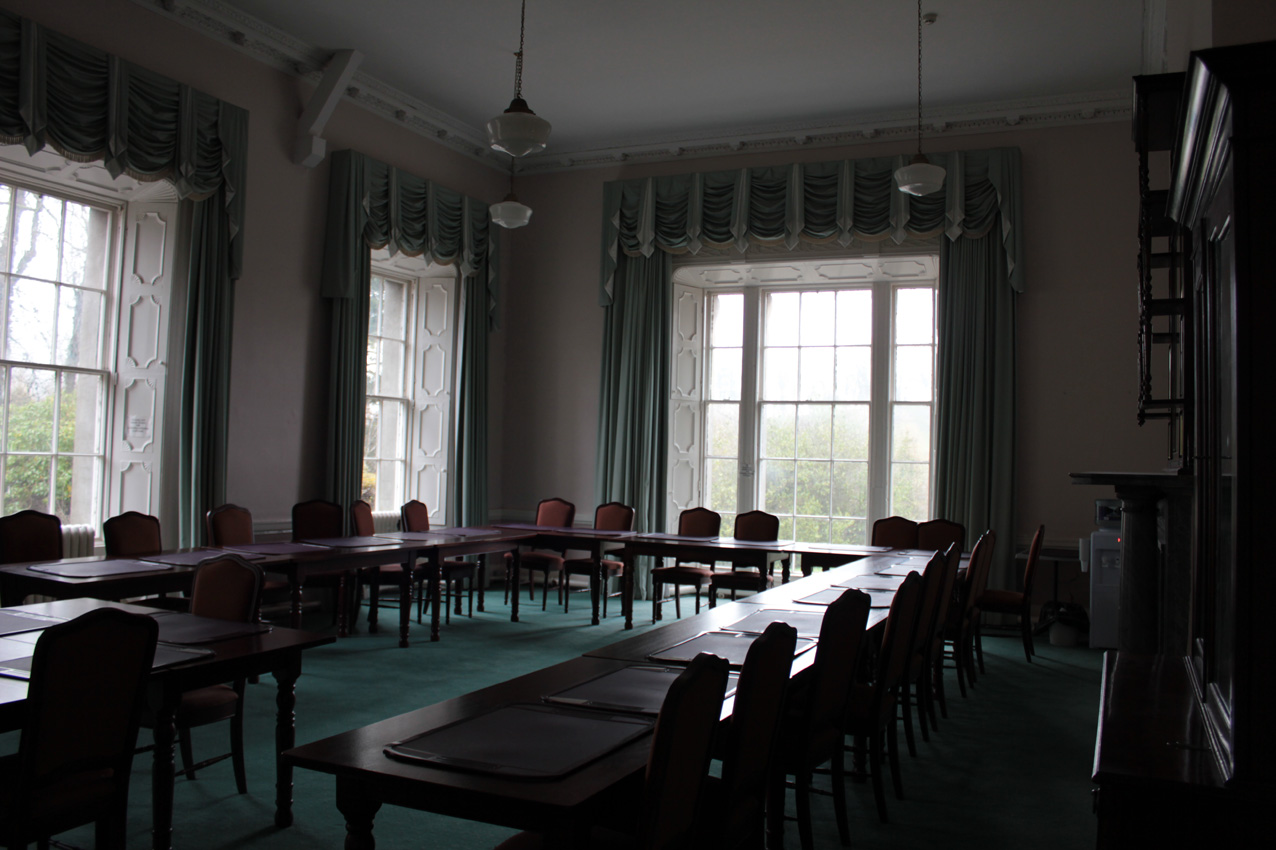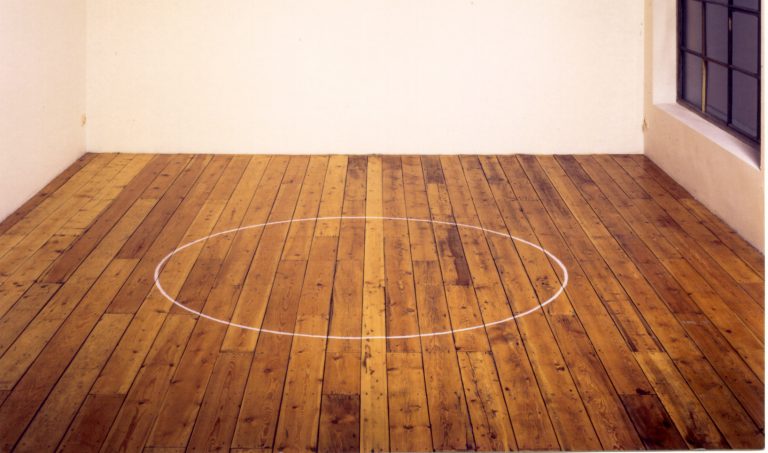126 is an artist-run collective that operates out of Galway City; with nodes of connection at Catalyst in Belfast and Transmission in Glasgow. This self-curated, group show featured a number of different artists from the collective, both emerging and established.
Paul Murnaghan’s Somehow you knew this was coming comprised a small inflatable island with one tree and two monkeys on it. There was a large fan – with cassette taping flailing from it, trying to blow the island away. The island, however, was tied back to a large antique weight. The whole piece, spray painted black and lit from the ground with a small spotlight, created a very sumptuous if weird effect. The taut black piece of rope, between island and weight, was a sort of constant counter-point to the hysterics of the fan and theatrical spotlight.
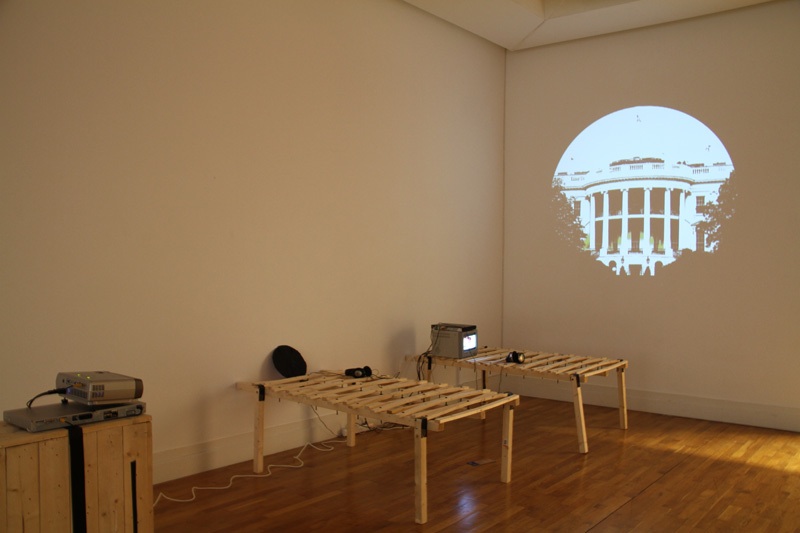
James Merrigan’s The devil in the little places
installation view
image courtesy 126.
Across from this piece was Kathryn Maguire’s wall-mounted, mirrored text: The only constant is change. Also sharing gallery 2, were two large-scale video projections: James Merrigan’s, The devil in the little places and Austin Ivers’s In times of infection. Merrigan’s video piece featured a fish-eye type view of the White House. Below this projection there were two wooden slated beds, or what looked like torture tables, with a sound and video piece on each one. Across the room, Austin Ivers’s strangely hypnotic video piece played on a loop with an accompanying, rhythmic bass audio.
There are political nods toward the Bush and post Bush era in the U.S., and the global affect these administrations represent. Also in evidence are the impulses and language of a global, cultural colonisation. The artists seemed to have formed a collective query and response to these changing contemporary social issues.
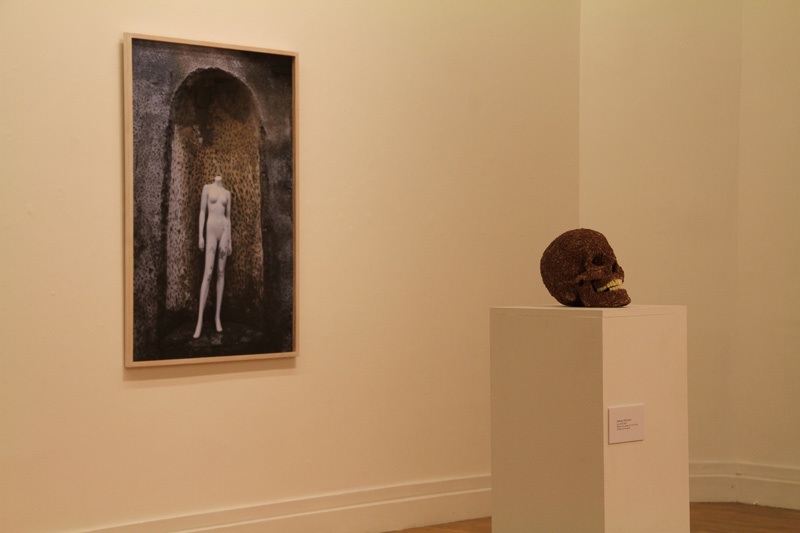
Video Killed the Radio Star
installation view, 2010,
image courtesy 126.
In the brighter Gallery 3, Padraig Robinson’s Hirst-like skull sat on a plinth – it is made from burst Coco-Pops. To the right wall, Nina Amazing’s garish and amateurishly photoshopped, billboard-sized image featured two failed X-factor type contestants in a before-and-after / “where are they now?” scenario. It skewered many modes of visual communication, both in the sense of their ubiquity and their “usability.” The preposterousness of the scale of this pixelated image brings to mind the unfettered bloat attached to modern entertainment and through this, it lends the work an Altermodernist [1] slant – that for all its hilariousness makes a valid comment on current, cross-cultural, entertainment language.

Fiona Chambers: Cross Stitch Project
Image courtesy of the 126
Fiona Chambers’ crafty cross stitch project featured five stitch patterns of disposable internet images, set out on graph paper. The tiny instructive hieroglyphics that reside in each graph square give the stitch pattern. When viewed from a certain distance, through a sort of tonal build up, it gives the nature of the final image itself – be this of a “kangaroo dog”, a “wet cat” or the “world’s smallest body-builder,” et cetera.
Dominating the rear wall of Gallery 3, Dominic Thorpe’s I will forget, and Jim Ricks’ A shanty we can believe in. Thorpe’s charcoal on paper piece comprised an isolated forest of vertical, black marks. The words slowly revealed themselves from this melee, blurring the line between drawing and writing. Beside this, in the corner of the room, sat a life sized, locked up shack – its walls constructed of OBAMA ’08 election posters.
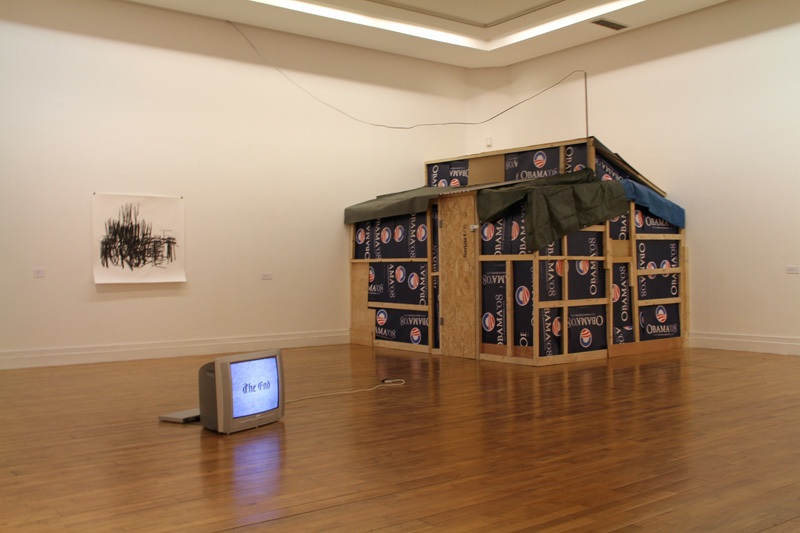
Video Killed the Radio Star
installation view, 2010
image courtesy 126.
There were works by David Finn and Kevin Mooney also in this collective: a large, colour photograph of a mannequin in an alcove and, three, small, pierced, oil on canvas pieces depicting an interrupted, futuristic, architectural landscape.
In the centre of this room, a television sat on the gallery floor, beaming the words, THE END in a static, gothic font. It was a black and white animation, with a subtle, boiling background accompanied by a recorded score, written and performed by Marja Gaynor. This, coupled with the rhythmic bass boom – from Austin Ivers’s piece in gallery 2 – brought the overall thrust of the show to the brink of over-commitment. However, any potential suffocation from this was avoided on account of the variety of the media and individual conceptual approaches.
[1] Altermodern Manifesto, Tate Triennial, Nicolas Bourriaud, 2009

